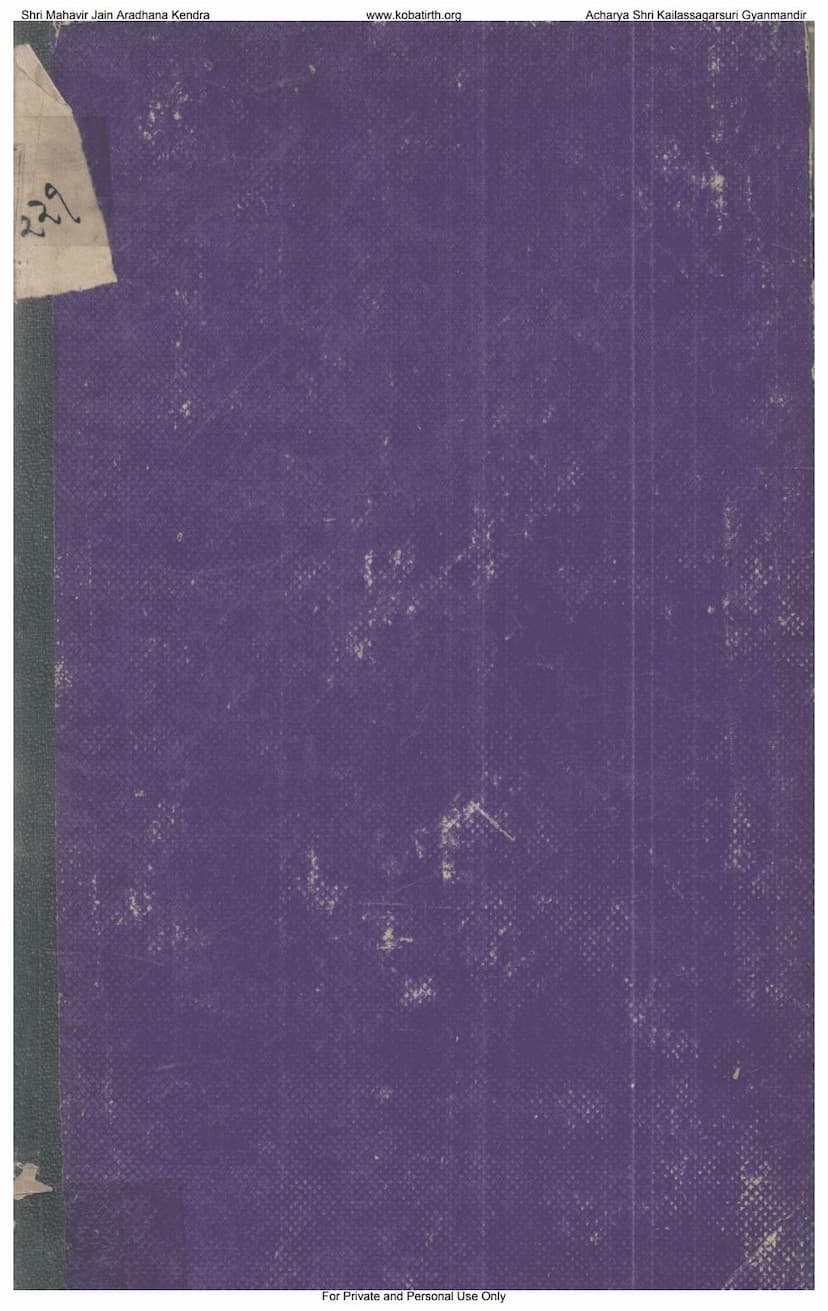Vedang Prakash
Added to library: September 2, 2025

Summary
This document is the fifth part of a series titled "Vedanga Prakash" by Swami Dayanand Sarasvati, with a commentary by Dayanand Sarasvati Swami himself. The specific section within this volume is dedicated to "Samasika," which translates to the study of Sanskrit compound words (samasa). It is the seventh book in a series meant for reading and teaching.
The book is printed by Vaidic Yantralaya in Ajmer and has been printed for the third time with an edition of 1000 copies. The copyright is registered.
Key Concepts and Sections Covered:
The text begins with an introduction to "Samasika," explaining that it is a treatise on compound words. It states that there are four main types of samasas:
- Avyayibhavah (अव्ययीभाव): Where the first word (often an adverb) is predominant.
- Tatpurushah (तत्पुरुष): Where the second word is predominant.
- Bahuvrihih (बहुब्रीहि): Where a word other than the ones in the compound is predominant.
- Dvandvah (द्वंद्व): Where both (or all) words in the compound are predominant.
The text then delves into the rules and principles of samasa, referencing Panini's Ashtadhyayi. It explains the purpose of samasa as reducing multiple words into one, multiple case endings into one, and multiple vowels into one.
The document systematically explains various types of samasas and their rules, citing sutras from Panini's grammar. It covers:
- Samarthah Padavidhih (समर्थः पदविधिः): The rule of "capable" or "meaningful" words in forming compounds.
- Subantemitra Parangavadbhavah Swarah (सुबामन्त्रिते पराङ्गवत् स्वरे): Rules regarding the accentuation when an address term (amantrita) is followed by a compound.
- Prak Kadarat Samasah (प्राकू कडारात् समासः): The scope of samasa rules extends up to the sutra "Kadarah Karmadharaye."
- Saha Supaa (सह सुपा): The compounding of words with "saha" (with).
- Avyayibhavah (अव्ययीभाव): Detailed explanations of the Avyayibhav samasa, its purpose (predominance of the first word), and various contexts in which it applies (e.g., proximity, abundance, absence, excess, resemblance, order, coincidence, attainment, totality). It also details specific sutras like "Avyayam Vibhaktisamipasamrddhivyaddhyarthabhavatyayatyayasampratishabdapradurbhavapashchyathyanupurvyayogapadyasadṛśyasampattisakalyantavachaneṣu" and its applications.
- Tatpurushah (तत्पुरुष): Introduces the Tatpurusha samasa and its subtypes, including Dvigu, which is a type of Tatpurusha. It discusses how Tatpurusha compounds are formed with different case relationships (second to seventh cases).
- Bahuvrihih (बहुब्रीहि): Explains the Bahuvrihi samasa, categorizing it into two types: tadguna-samvijñana and atadguna-samvijñana.
- Dvandvah (द्वंद्व): Details the Dvandva samasa, categorizing it into itaretara-yoga, samahara, and ekashesha.
The text provides numerous examples for each rule, often contrasting them with situations where the rule does not apply (pratyudaharanas). It also includes Vartikas (वा.) which are supplementary explanations or modifications to the primary sutras.
Overall Purpose and Significance:
This book, "Samasika," is a detailed grammatical treatise on Sanskrit compound words, presented as a commentary on Panini's grammar by Swami Dayanand Sarasvati. It aims to provide a comprehensive understanding of how different words combine to form new words with specific meanings and grammatical functions in Sanskrit. The text emphasizes the importance of understanding samasa for proper Sanskrit composition, comprehension, and indeed, for understanding Vedic literature and broader knowledge.
The catalog link provided points to a Jain resource, indicating that this work on Sanskrit grammar is being made available through a Jain educational initiative.